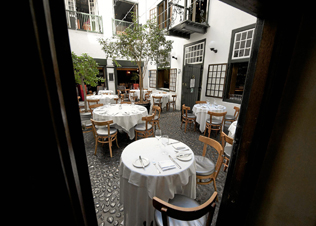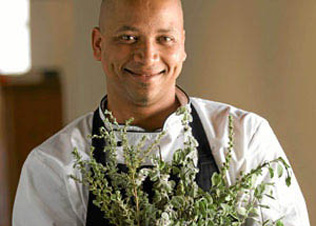News
No flies on New Dutch cuisine
Monday, January 16th, 2012
Today the narrow buildings of old Amsterdam tilt and lean forward, almost as if they are trying to listen in on conversation as you stroll along the canals. One is surrounded by many familiar names: the Herengracht, Elandsstraat, De Groenmarkt. The smell of cookies and cinnamon hangs in the air.
There is, of course, more to Dutch cookery than the pancakes, vetkoek and melktert they gave us. There is also more to it than herring, Gouda cheese, syrup waffles and croquettes. Culinary influences from a vast global empire were enthusiastically absorbed, to me best summed up in the iconic Dutch biscuit, speculaas, which contains cinnamon and ginger, predominantly, but also cloves, ground mace, white pepper, cardamom, coriander, anise and nutmeg.
Restaurant d’Vijff Vlieghen (Five Flies) on the Spui square, close to the red-light district is a popular upmarket tourist haunt in Amsterdam. Famous visitors have included Walt Disney, Orson Welles, Bruce Springsteen, Russian President Dmitry Medvedev and Mick Jagger.
The oldest part of this 300-seat, nine-room restaurant dates back to 1627. Each room has a unique character meant to express an aspect of the Golden Age: the Glass Room with walls covered in 17th-century gilded leather; the Knights Room with a suit of armour and weaponry dating from the Eighty Years’ War with Spain; the Rembrandt Room with etchings. In the Mother Hendrina Room on the second floor one is surrounded by dark wood and a sizeable collection of faded antique Delft Blue tiles.
I decided, not without some trepidation, to go with the four-course surprise menu (€44.50), entrusting myself to chef Jeroen Groot and his New Dutch cuisine — eclectic, organic and seasonal. The waitress would not even hint at what might be on the menu; she merely inquired whether I was allergic to anything.
With a bottle of Domaine La Condamine l’Evêque Merlot, a blend of cabernet sauvignon and merlot, I awaited my fate, hoping it was not going to be a confrontation with stewed eel or langoustine tartar. The amuse-bouche was encouraging, a glass filled with clearly defined layers of airy cauliflower soup and sweet red pimento, topped with tiny croutons flavoured with an “Indian herb mix” (not ganja).
It was hunting and shooting season and I need not have worried. First course was the most tender cubes of rabbit with mini figs, slices of brioche, olive mayonnaise, celeriac and smears of mushroom. This was followed by haddock with a crunchy mushroom crust, green beans, potato and a delicate green sauce that tasted of parsley and coriander.
The main plate was a fillet of pheasant – the choicest part – with crispy bacon, tangy sauerkraut and potato mash formed to trick the eye into thinking it was a slice of bisected pear. Dessert consisted of a trio of ice creams: chocolate, mango and clove.
Restaurant d’Vijff Vlieghen has its counterpart in Cape Town. Similar to the Amsterdam establishment, Five Flies is also in a historic house, from the mid-1700s, with several dining rooms on two floors. There is a Clock Room, a Van Riebeeck Room and a Madiba Room.
I used to dine here when it was still the Netherlands Club and then again when it became Van Gogh’s. That went bust and the building was sold in the 1990s. The place reopened as Five Flies and was enormously popular, but it seems to have dropped off my radar since its heyday. It has changed ownership more than once and has been through some rather dreadful phases of lousy food and dismissible service. It seems now to be dependent on the coach-tour market.
On all three occasions I dined here in October the service was uneven and the staff engaged me in odd, inappropriate chitchat. Also, unlike the Amsterdam establishment, which plays no music, here they blast you with extremely irritating noise. More’s the pity, because the venue has so much going for it.
Portions are a decent size and the presentation is busy. For starters I recommend the rolled goat’s cheese and roasted beetroot with sage, white anchovy beignet, confit onion vinaigrette and an assortment of baby salad leaves (R65), or the crisp salt-and-pepper calamari with lime aioli, sweet black chilli sauce and jalapeno-coriander salad (R55).
I have not had much luck with main courses, although the kitchen is far better at fish than meat. The accompaniments to the roast kudu loin (R180) – butternut purée, braised red onion gel, smoked garlic croquettes, olive and goat’s cheese butter with a gooseberry jus – were more successful than the main feature. The same can be said for the Karan beef fillet with potato rosti, foie gras parfait and truffle jus.
The menu does change.
By Brent Meersman for Mail & Guardian Online
Heading to Amsterdam? Restaurant d’Vijff Vlieghen, Spuistraat 294-302, Amsterdam, Netherlands. Tel: +31 20 53 04 060











